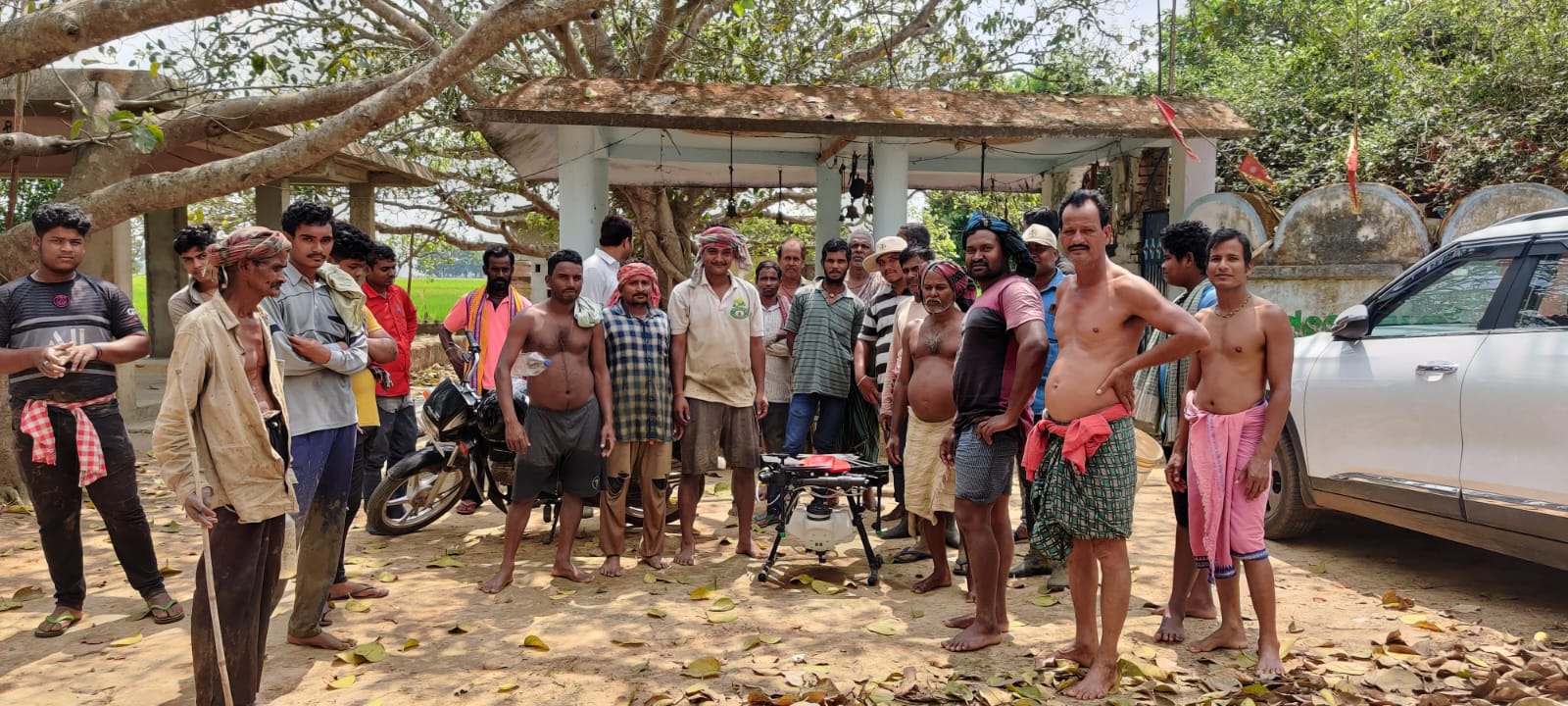Introduction
Agriculture, the backbone of many economies and a vital source of food and employment, has undergone tremendous transformation over the centuries. From manual labor to mechanized farming, and now to precision agriculture, each technological shift has helped improve productivity, efficiency, and sustainability. In recent years, the emergence of drone technology—also known as Unmanned Aerial Vehicles (UAVs)—has opened up new frontiers in agricultural innovation. Drones are revolutionizing farming practices by offering farmers real-time data, automation, and precision at a scale previously unimaginable. This essay explores how drones can revolutionize agriculture by improving crop monitoring, spraying, planting, irrigation, livestock management, and overall decision-making.
1. Precision Agriculture and Data Collection
One of the most significant ways drones are transforming agriculture is through precision farming—a farming management concept that uses data and technology to optimize field-level management.
1.1 Crop Monitoring and Health Assessment
Traditional crop monitoring involves physical inspection, which is time-consuming and labor-intensive, especially for large farms. Drones equipped with RGB, thermal, and multispectral cameras can scan entire fields in minutes. These sensors help generate Normalized Difference Vegetation Index (NDVI) maps that highlight plant health based on chlorophyll levels and other parameters.
By analyzing these maps, farmers can:
Identify areas with nutrient deficiency or disease
Detect pest infestations early
Monitor crop growth over time
Take corrective actions before damage becomes irreversible
1.2 High-Resolution Mapping
Drones can create 2D orthomosaic maps and 3D terrain models of farmlands. These maps help farmers:
Plan irrigation and drainage systems
Design planting strategies
Monitor soil erosion and land changes
Understand variations in soil health across the field
With centimeter-level accuracy, these maps provide actionable insights for better land management.
#2. Drone-Based Aerial Spraying
Spraying fertilizers, pesticides, and herbicides is a necessary but risky and resource-intensive task. Drones equipped with spray tanks and nozzles can carry out aerial spraying with great efficiency.
#2.1 Targeted Application
Instead of blanket spraying across the entire field, drones can spray only where needed, based on data from crop health assessments. This targeted approach:
Reduces chemical use by up to 30–50%
Minimizes environmental contamination
Prevents over-application that could harm crops
Cuts down operational costs
#2.2 Safety and Accessibility
Spraying chemicals manually or using ground vehicles exposes workers to health hazards. Drones can perform the task remotely, reducing human exposure. They are also useful in:
Difficult terrains where tractors cannot reach
Wet, muddy, or sloped areas prone to soil compaction
Drones increase the safety and accessibility of spraying tasks, ensuring consistent coverage and precision.
#3. Irrigation and Water Management
Water is a scarce resource in many parts of the world, and inefficient irrigation leads to waste, lower yields, and higher costs.
#3.1 Moisture Mapping
Drones with thermal or multispectral sensors can identify variations in soil moisture across a field. Farmers can:
Detect over- or under-irrigated zones
Adjust irrigation schedules
Prevent waterlogging and drought stress
Use water resources more sustainably
#3.2 Integration with IoT and Smart Irrigation
When drone data is integrated with ground sensors and Internet of Things (IoT) platforms, it enables automated irrigation systems that respond to real-time soil and weather data. This synergy results in efficient water use, better crop health, and cost savings.
#4. Disaster Management and Risk Assessment
Farming is vulnerable to natural disasters such as floods, droughts, and pests. Drones play a critical role in disaster preparedness and response.
#4.1 Pre-Disaster Planning
Using 3D terrain modeling and elevation data, drones help:
Identify flood-prone areas
Plan drainage systems
Predict crop vulnerability
#4.2 Post-Disaster Assessment
After a disaster, drones can quickly assess damage to:
Infrastructure (irrigation lines, greenhouses)
Crops and plantations
Livestock and storage facilities
This information aids in insurance claims, government relief, and planning recovery strategies.
#5. Increased Efficiency and Cost Savings
Drone use reduces the need for manual labor, heavy machinery, and wasted resources. This translates to:
Lower operational costs
Higher yields through optimized input use
Better ROI for both small and large-scale farmers
In developing countries, drone service providers are emerging to offer drone-as-a-service (DaaS) models. Farmers can pay per use, avoiding the high cost of purchasing drones.
#6. Climate-Smart Agriculture and Sustainability
Drones contribute to climate-smart agriculture, which aims to increase productivity while reducing greenhouse gas emissions and environmental impact.
They help in:
Minimizing overuse of fertilizers and pesticides
Conserving water
Reducing soil compaction by replacing ground machinery
Promoting reforestation and land recovery
As agriculture faces the challenges of climate change, drones offer a sustainable, low-impact alternative to traditional farming practices.
#7. Empowering Smallholder Farmers and Rural Communities
Technology adoption has traditionally favored large commercial farms. However, drones are becoming more affordable and accessible, even for smallholder farmers.
#7.1 Drone Service Models
Organizations and startups are offering:
Drone rental and spraying services
Community-based drone cooperatives
Training programs for rural youth in drone operation
These models help bridge the digital divide and empower rural communities with modern agricultural tools.
#Conclusion
Drones are more than just flying machines; they are powerful tools for revolutionizing agriculture. From crop monitoring and precision spraying to disaster management and smart irrigation, drones offer a new level of insight, accuracy, and efficiency. While challenges related to cost, regulation, and training remain, the future of drone-assisted farming is bright. As more farmers, researchers, and policymakers recognize their potential, drones are set to become an essential component of modern, sustainable agriculture.
The true revolution lies not just in the technology itself, but in its ability to empower farmers, protect the environment, and secure global food supplies in a changing world.
